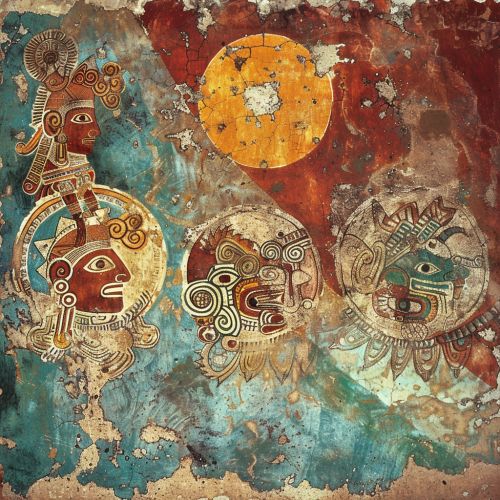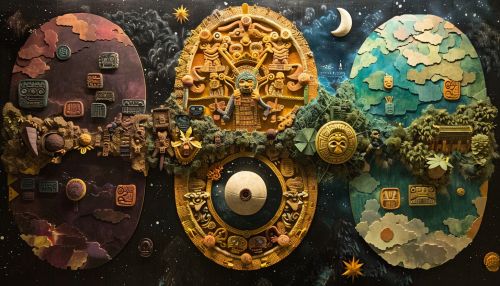Maya religion
Overview
The Maya religion was a complex blend of polytheism, shamanism, animism, and ancestor worship, with a rich pantheon of deities and a strong emphasis on fertility and agriculture. The religion was deeply interwoven with every aspect of Maya life, including politics, art, and social structure.
Cosmology
The Maya believed in a multi-layered universe, consisting of the celestial realm, the earthly realm, and the underworld. Each of these realms was populated by various deities and spirits, and each had its own characteristics and attributes. The celestial realm was associated with the sun, moon, stars, and planets, and was considered to be the home of the gods. The earthly realm was the domain of humans, animals, and plants, while the underworld was associated with death, decay, and darkness.


Deities
The Maya pantheon was extensive, with gods representing various aspects of nature, human activities, and abstract concepts. Some of the most important deities included Itzamna, the creator god; Kukulkan, the feathered serpent god; and Chaac, the rain god. Each god had its own personality, attributes, and associated rituals.
Rituals and Ceremonies
Maya rituals and ceremonies were complex and varied, ranging from simple household offerings to elaborate state ceremonies. Common elements included music, dance, incense burning, and the offering of food, drink, and other goods. Bloodletting and human sacrifice were also practiced, believed to appease the gods and ensure the continuation of the world.
Afterlife Beliefs
The Maya believed in an afterlife, with the nature of one's afterlife determined by one's actions in life. Those who led virtuous lives were believed to ascend to the celestial realm, while those who committed serious sins were condemned to the underworld. The afterlife was not seen as a final destination, but as part of a cyclical process of death and rebirth.
Influence on Society
Religion played a central role in Maya society, influencing everything from politics to art. Kings were seen as divine intermediaries, responsible for maintaining the favor of the gods through rituals and sacrifices. Religious themes were prevalent in Maya art, with gods, spirits, and mythological scenes depicted in sculptures, murals, and ceramics.
Decline and Legacy
With the decline of the Maya civilization, many aspects of the Maya religion faded away. However, some elements were absorbed into the religions of the Spanish colonizers, and others have survived among the modern Maya peoples. Today, the Maya religion is recognized for its complexity and sophistication, and for its influence on the development of Mesoamerican culture.
